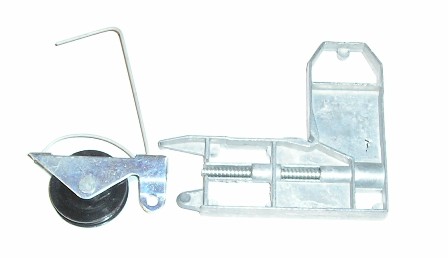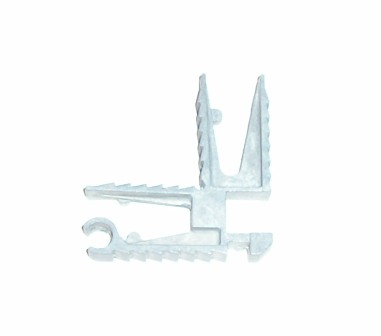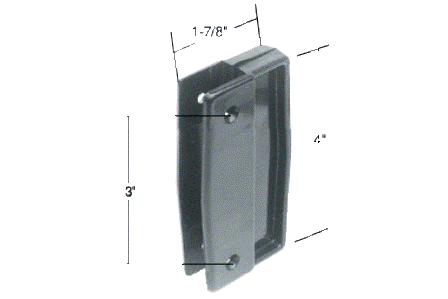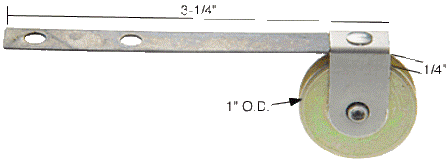Sliding screen door hardware
Sliding screen door hardware can sometimes be hard to find, and homeowners sometimes end up replacing a whole screen door just because one part cant be found.
On this page I will show some of the parts inside your slider so its a bit easier to go looking for them. Seeing what sliding hardware is inside should also help you understand how to repair it.
 This is a very common corner and matching roller. I know it by the trade name MRSA but it is used by different names all over north america.
This is a very common corner and matching roller. I know it by the trade name MRSA but it is used by different names all over north america.
The corner fits tightly in the slider extrusion. The corner is made from die cast aluminum and is often breaks in half making your slider frame loose its strength.
Usually when it breaks you have to dig the broken halves out of the slider bars.
Theres a bit of a trick to installing new MRSA rollers, it's not quite the "caramilk" secret but heres a YouTube video I made revealing it....
The matching roller shown has a 1-1/8" Diameter Nylon roller but some manufacturers use a 1" diameter ball bearing roller which works much better than the Nylon version.
The roller itself has metal tabs which need to be spread apart with the flat blade screwdriver to snap onto the corner. Its a trick which requires a little practice but anyone can learn how to do it.
The advantage is that you dont have to take the whole screen door frame apart to replace the rollers.
 This corner is also a very common style. Again its made of die cast magnesium/aluminum or potmetal and again this one has a tendency to snap in half.
This corner is also a very common style. Again its made of die cast magnesium/aluminum or potmetal and again this one has a tendency to snap in half.
Some of the older versions of this corner were solid chunks of aluminum and rarely broke. I guess that wasnt good for business so the corner was made with less durable but cheaper material.
The roller that fits this corner is not shown but it is entirely made of nylon. There is a circular tab on the roller holder that fits in the hole seen in the corner.
This tab often breaks off and the screen door will drop down on the track and be hard to open.
You have to take the whole frame apart to replace this type of roller. You cant snap the roller in place like the MRSA roller above.

Handles are one of the more common things that break on a slider. The handle shown is one of the more popular models. The nice thing about handles is that just about any type will fit panel.
You might have to drill new holes for screws but thats about the worst of it.
Some screens need to slide in between glass panels so you may have to find a handle that does not stick out so far it interferes with the glass.
Also, if the broken handle is held on by rivets, you will need to carefully drill the heads of the old rivets with a sharp drill larger than the diameter of the rivet head.
With practice you can drill off the rivet and still reuse the old hole for the new pop rivet. If you drill too far, you will end up with a big hole in the aluminum screen door rail that you have to cover up.

The roller shown in the picture above is also extremely common. This one has a ball bearing roller which is nice but the mounting causes problems.
The roller is held on by 2 screws that go directly into the corner of the panel. These screws will get loose with time and scrape along the top of the track.
This design also has no adjustment. Sometimes manufacturers will put screws right through the screen rail so that the tip of the screw pushes on the straight bar of this wheel.
That gives you the ability to adjust the height and square up the panel in the frame. But the screws rust and often break if you try to adjust them.
If you have these kind of rollers, you dont want to spend too much time or expense trying to make them work, because there are much better ones in the market.
Just replace the whole slider with a better one at some point.